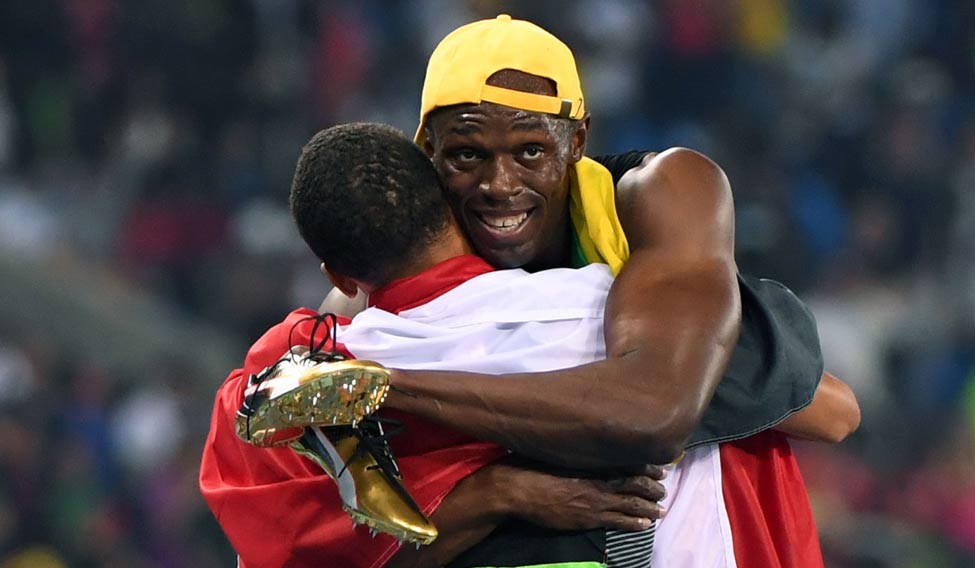The bromance was there for all to see. Or was it sheer respect? One, a legend, and the other, the new kid on the block. Both draped in their national flags, hugging and congratulating each other, after a pulsating 100m dash at the 2016 Rio Olympics.
The world had eyes only for Usain Bolt, who was gunning for the record third consecutive 100m title in Olympic history, and his rivalry with Justin Gatlin of the US. But the man on Bolt's right was the one who made the world sit up and take notice. Andre De Grasse, all of 21, ran the race of his lifetime to clinch the bronze in 9.91 secs to become Canada’s first Olympic medallist in 100m sprint since Donovan Bailey who won the gold at Atlanta in 1996. A day later he breezed into the semifinals of the 200m race in 20.09 secs—the best timing among all the sprinters who took part in heats, including Bolt.
The rest of the world might have been late in waking up to the Canadian prodigy but the legend, having realised his potential, had warned his compatriot and former Olympic silver medallist, Yohan Blake, to watch out for the “dark horse” in Rio. A year ago, at the world championships in Beijing where Bolt won the gold and Grasse tied for the bronze in the 100m final, the former had interrupted Grasse's TV interview on the track to congratulate him, catching him unawares.
 Usain Bolt (R) hugs Grasse after the men's 100m final at the Olympic Stadium in Rio de Janeiro | AFP
Usain Bolt (R) hugs Grasse after the men's 100m final at the Olympic Stadium in Rio de Janeiro | AFP
Grasse had the chance to meet Bolt for the first time at the Commonwealth Games in Glasgow, but he, reportedly, developed cold feet. And in two years, he has the legend gushing about how Grasse runs like him and that “he's going to be good”.
A dream compliment for someone who, in a way, burst on to the international scene only last year with two bronze medals at his first IAAF World Championships—the other coming in 4x100m relay. Before that, he won the gold in 100m and 200m at the Pan Am Games in Toronto. In fact, he signed a pro deal worth US$ 11.25 million with Puma, which sponsors Bolt, too, only in December 2015.
The whole of Markham, Ontario, from where Grasse hails, is proud of him today. So was his mother Beverley De Grasse, who turned emotional after her son's triumph. A high-school sprinter herself, Beverley moved to Canada from Trinidad and Tobago in 1987. Unlike his mother, young Grasse fell in love with basketball rather than track and field events. And it was basketball that injured his right arm, which makes it extend out straight while sprinting, unlike his left arm. Dubbed the “Andre Arm”, Grasse is determined to rectify it and try to go faster.
With Bolt declaring that Rio will be his swansong, Puma might have had signed the deal with the future of sprint world. But to be counted among the greatest, Grasse needs to do work on his acceleration phase—from the blocks to the upright position—in the race, as coach Stu McMillan pointed out. At 5'9”, height is on his side, and with a bit more muscle and a better start, he might have his own 'Bolt' moment sooner than expected.





